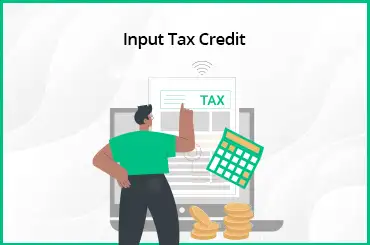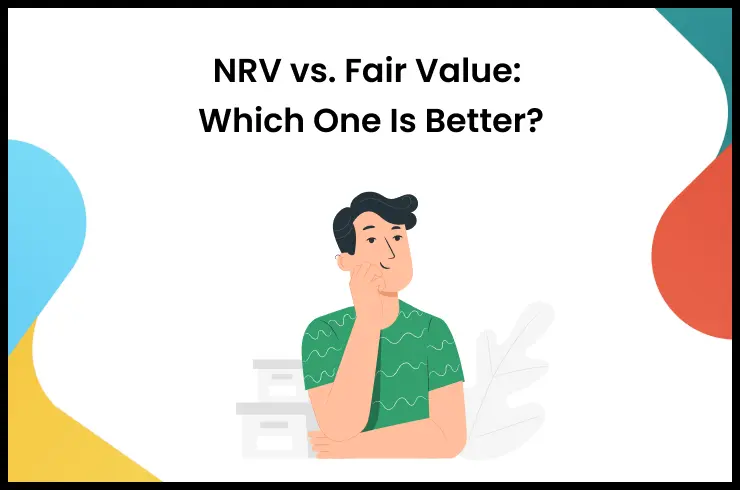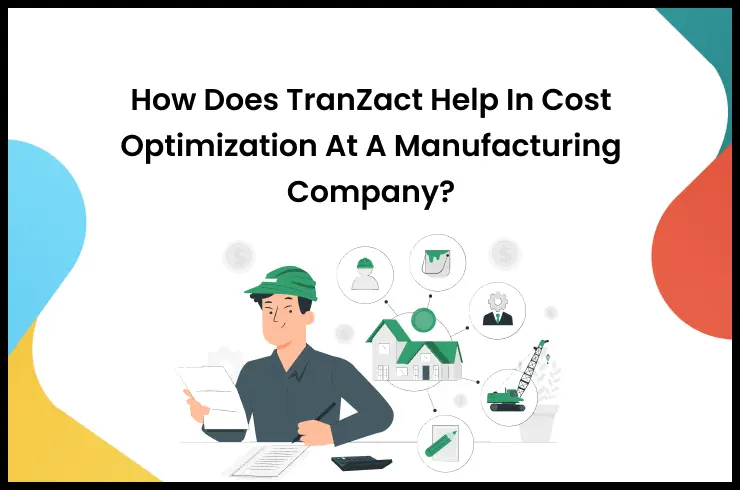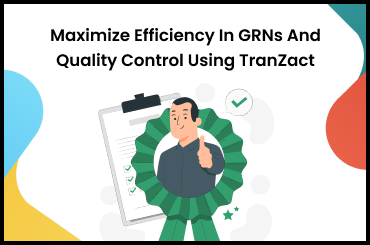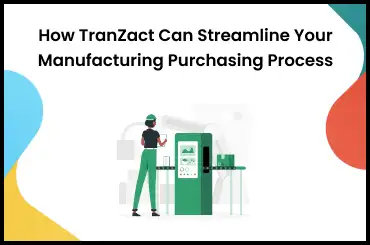A Purchase Requisition is an essential aspect of the procurement process. It helps businesses maintain control over spending, streamline purchasing activities, and ensure compliance with company policies.
In this comprehensive guide, we will explore Purchase Requisition essentials, types, processes, automation benefits, Purchase Order comparisons, and answer frequently asked questions.
What is Purchase Requisition?
A Purchase Requisition is a crucial element of the procurement process, helping businesses maintain spending control, streamline activities, and ensure compliance with company policies. As an internal document, it records requests for goods and services within an organization. Employees submit a Purchase Requisition Form to the purchasing department, detailing essential information such as the requested item, quantity, delivery date, and budget. The purchasing department then reviews the form and either approves or denies the request. If approved, a Purchase Order is created and sent to the vendor for fulfilment. By incorporating a Purchase Requisition and Purchase Order system, SMEs can achieve heightened efficiency in their procurement process.
Why Do Businesses Need Purchase Requisition?
The Purchase Requisition Process enables businesses to maintain budget control through proper approvals of expenditures and vigilant monitoring of every procurement task.
- By providing a central repository to track all purchase requests, the system streamlines procurement activities and ensures a smooth workflow.
- A Purchase Requisition system helps ensure compliance with company policies, standard regulations, and industry best practices, fostering a culture of accountability and integrity within the organization.
- By developing a robust Purchase Requisition system, organizations can standardize procurement and effectively manage budgets with appropriate expenditure approvals and monitoring.
Through the effective management of key supply chain touchpoints, a well-designed Purchase Requisition system ultimately contributes to the organization's overall success and sustainability in the long run.
How Do Purchase Requisitions Work?
The Purchase Requisition Process encompasses several stages, including purchase request submission, screening, approval review, Purchase Order creation, and order fulfilment. Automating the process with software aids in tracking, monitoring, and analyzing for enhanced operations.
In the initial step, employees submit purchase requests through a form, providing necessary information and sending it for approval. The designated purchasing authority verifies the data, and if accurate, forwards the form for Purchase Requisition approval. Organizations designate approvers who assess requests based on budget and provide reasons for rejection if necessary.
Once approved, a Purchase Order is created and sent to the supplier, who performs a three-way matching practice to verify the request's legitimacy. Suppliers then deliver goods and send invoices to the accounts department for payment.
Automation can ensure an error-free Purchase Requisition Process. Companies can utilize Purchase Requisition software for tracking, monitoring, and analyzing the process with high-level granularity for optimized operations.
What Is Included in Purchase Requisition?
A Purchase Requisition request contains essential information required for the purchasing department to review and approve the request, thereby streamlining procurement operations. The details included in a Purchase Requisition Form usually comprise the following elements:
- Requestor information: This includes the name, department, and contact information of the employee making the request, ensuring accountability and facilitating communication if further clarification is needed.
- Item or service description: A clear and detailed description of the goods or services required, including specifications, model numbers, or any other pertinent information to accurately identify the requested items.
- Quantity: The number of units or amount of each item or service needed.
- Unit price: The cost per unit of the requested items or services, which may be based on quotations, previous transactions, or market rates.
- Total cost: The overall cost of the requested items or services, calculated by multiplying the unit price by the quantity.
- Delivery requirements: Information on the desired delivery location, date, and any specific instructions to ensure timely and accurate delivery of goods or services.
- Payment terms and conditions: Details on the preferred payment method, terms, and any applicable discounts or conditions.
- Justification: A rationale for the purchase, explaining its importance and relevance to the organization's operations or objectives.
- Budget information: Details of the budget allocated for the purchase, including the budget code or project number, if applicable.
- Approval signatures: Space for the signatures of relevant approvers, such as supervisors, managers, or department heads, to grant permission for the purchase.
Upon submission, the Purchase Requisition Form undergoes review and approval before a Purchase Order is created and issued to the supplier.
Different Types of Purchase Requisitions
Purchase Requisitions serve as a crucial component in an organization's procurement activities, facilitating the acquisition of goods and services to meet specific requirements. These requisitions come in various types, each designed to cater to distinct procurement needs and scenarios. Different types of Purchase Requisitions cater to specific procurement needs within an organization. These types include:
- Standard Purchase Requisition: This common type is used for general goods and services procurement. It includes basic information such as item descriptions, quantities, and prices.
- Blanket Purchase Requisition: Employed for recurring purchases of goods or services over a specified period, this requisition includes information on the total quantity and value, as well as the frequency of deliveries.
- Emergency Purchase Requisition: This type is utilized for urgent purchases required to address critical situations, such as equipment breakdowns or sudden supply shortages. It may bypass the standard approval process to expedite procurement.
- Project Purchase Requisition (PPR): This requisition is used when a company requires materials related to a particular project for a specific duration. The PPR contains information about the project, such as descriptions of the goods or services, quantity, budget allocation, and delivery schedule.
- Capital Equipment Purchase Requisition: Companies use this type when acquiring long-term assets, such as land or machinery. Given the assets' extended lifespan, purchasing order requirements must be precise and error-free.
- Sole Source Purchase Requisition: Employed when an organization needs to acquire goods from a single supplier due to unique business requirements, this requisition ensures that every transaction detail is accurately recorded to effectively track each purchase request.
- Subcontracting Purchase Requisition: This type of purchase requisition is used when a company outsources part of its production or services to a subcontractor. The requisition includes information about the services or goods provided by the subcontractor, along with their specific terms and conditions.
- Stock Transfer Purchase Requisition: A stock transfer purchase requisition is employed when a company requires the transfer of goods from one internal location to another. This type of requisition helps manage and track inventory levels and ensures that the appropriate items are available at the required locations within the organization.
In the following section, we will delve into the Purchase Requisition Process, shedding light on how organizations can efficiently execute these requests to optimize their procurement operations.
What is the Purchase Requisition Process?
The Purchase Requisition Process is a vital component of an organization's procurement operations, consisting of several essential steps that ensure efficiency and compliance with company policies and budget constraints.
Step 1: Purchase Request Submission
In the initial step of the Purchase Requisition Process, employees across various departments identify the need for goods or services. They complete a Purchase Requisition Form that includes essential details such as the required items or services, quantities, prices, and delivery requirements. This step is crucial for small and medium-sized enterprises (SMEs) as it helps them maintain an organized and traceable record of procurement requests, ensuring that all purchases align with the company's goals and objectives. By having a standardized Purchase Requisition Form, SMEs can minimize miscommunication and confusion, resulting in a more efficient procurement process.
Step 2: Purchase Request Screening
Upon receiving the Purchase Requisition Form, the designated purchasing authority, often a member of the procurement department, reviews the submitted information for accuracy and completeness. They verify whether the requested items or services are within the company's budget and adhere to the organization's procurement policies. For SMEs, this step is vital in preventing unauthorized or unnecessary purchases, allowing businesses to optimize their spending and maintain better financial control. Additionally, it ensures that suppliers meet the organization's quality and service standards.
Step 3: Approval Review Process
Once the purchasing authority verifies the Purchase Requisition Form, it is forwarded to the appropriate approval manager. In SMEs, the approval manager may be a senior manager or department head responsible for overseeing procurement decisions. They review the request based on factors such as budget allocation, supplier qualifications, and compliance with company policies. If the request is within the department's budget and aligns with company guidelines, the manager approves it. Otherwise, they provide reasons for rejection, allowing the requestor to revise or cancel the requisition. This step helps ensure that all procurement activities support the business's strategic goals and maintain financial discipline.
Step 4: Purchase Order Creation
Once the Purchase Requisition is approved, a Purchase Order is created and sent to the supplier. This document serves as a legally binding agreement between the buyer (the SME) and the supplier, outlining the terms and conditions of the purchase. For SMEs, creating a Purchase Order is essential in providing an unambiguous record of the transaction, ensuring that both parties understand their obligations and expectations. This step reduces the likelihood of disputes, delays, and misunderstandings, promoting a smooth and efficient procurement process.
Step 5: Order Fulfillment and Procurement
The final step in the Purchase Requisition Process involves the supplier delivering the requested goods or services according to the agreed-upon terms. The buyer verifies that the items received match the Purchase Order, and any discrepancies are addressed promptly. For SMEs, this step is crucial in maintaining quality control and ensuring that the procured goods or services meet the organization's standards. Once the order is fulfilled, the supplier sends an invoice to the buyer, who processes it for payment according to the terms outlined in the Purchase Order. Proper management of this step helps SMEs maintain strong relationships with their suppliers and enables them to negotiate better deals and payment terms in the future.
By following above mentioned systematic approach, organizations can optimize their procurement activities and minimize errors.
What are the Challenges in Manual Purchase Requisition Workflow?
Manual Purchase Requisition workflows can present numerous challenges for SMEs, affecting the efficiency and accuracy of procurement processes. Some common challenges faced by businesses include:
Inefficient processes:
Navigating multiple steps in manual workflows can be time-consuming and cumbersome, leading to delays in procurement and increased administrative burden. For SMEs, these inefficiencies can hinder their ability to respond to market demands quickly, ultimately affecting their competitiveness in the business landscape.
Lack of transparency:
In the absence of a centralized system for tracking Purchase Requisitions, it becomes challenging to monitor the status of requests and ensure that all necessary approvals are obtained. This lack of visibility can create bottlenecks, impacting the overall efficiency of the procurement process and potentially leading to missed opportunities or unnecessary delays.
Errors and inconsistencies:
Relying on manual data entry increases the likelihood of mistakes and discrepancies, which can result in inaccurate Purchase Orders and potential disputes with suppliers. These errors can not only strain business relationships but also lead to financial losses or compliance issues. Streamlining the Purchase Requisition workflow by minimizing manual intervention can significantly reduce the risk of errors and improve overall procurement efficiency for SMEs.
What are the Benefits of Automating the Purchase Requisition Process?
Automating the Purchase Requisition Process can offer several benefits, leading to a more efficient and streamlined procurement experience. Some key advantages include:
Improved efficiency:
Automation reduces the time and effort required to complete Purchase Requisitions, resulting in a faster and more streamlined procurement process. This enables businesses to respond more effectively to market demands and maintain a competitive edge.
Enhanced transparency:
A centralized system for tracking Purchase Requisitions allows for better visibility into the status of requests, ensuring that all necessary approvals are obtained. This increased transparency helps businesses make informed decisions and manage resources more effectively.
Reduced errors:
Automated data entry minimizes the risk of mistakes and discrepancies, leading to more accurate Purchase Orders. This reduces the likelihood of disputes with suppliers and potential financial losses, ensuring smoother business operations.
Better inventory control:
By automating the Purchase Requisition Process, businesses can effectively track inventory levels and monitor which items are in stock and on order. This improved inventory control allows for more accurate forecasting and better resource allocation.
By leveraging technology and implementing a systematic approach, businesses can save time, reduce errors, and improve overall efficiency. This ultimately results in better supply chain management, more accurate forecasting, and a stronger competitive position in the market.
How to Automate Purchase Requisition Workflow?
As stated earlier, automating the Purchase Requisition workflow can improve efficiency, reduce errors, and enhance transparency for small-to-medium-sized enterprises (SMEs). The following steps outline how to automate the Purchase Requisition Process:
Use a Pre-built Purchase Order Template
Using a pre-built Purchase Order template can simplify the requisition process, saving time and effort for employees. Many software providers offer a variety of templates designed for different business needs. Choose a template that best fits your organization's requirements or create a customized one by incorporating your company's branding, specific fields, and unique policies. A well-designed Purchase Order template ensures that all necessary information is captured accurately and consistently, minimizing the risk of errors and misunderstandings.
Implement Purchase Order Management Software
Invest in Purchase Order Management Software that offers features such as inventory control, supplier management, and reporting capabilities. This software can automate various aspects of the Purchase Requisition Process, from creating and approving requisitions to issuing Purchase Orders and Processing Payments. By centralizing and digitizing the entire process, the software enables better tracking, monitoring, and analysis of procurement activities, leading to improved efficiency and cost control.
Customize the routing and approval process
Each organization has its unique hierarchy and approval policies that must be adhered to in the Purchase Requisition Process. Ensure that your Purchase Order management software allows for the customization of routing and approval workflows to align with your organization's structure. This may involve setting up conditional approval steps based on factors such as department, budget, or purchase value. By automating the routing and approval process, you can expedite the procurement process and maintain compliance with your company's policies.
Create Dynamic Purchase Order Forms
Leverage the advanced features offered by your Purchase Order Management Software to create dynamic Purchase Order forms that adapt to your organization's changing needs. For instance, you can use auto-upload menus to add new fields, dropdown lists, or checkboxes to your Purchase Order form as required. This level of customization ensures that your Purchase Requisition workflow remains agile and responsive to your organization's evolving requirements.
By following these steps and investing in the right tools and software, businesses can optimize their procurement process, gain better control over spending, and adapt to changing business needs.
What Is a Purchase Requisition Form?
A Purchase Requisition Form is a vital internal document utilized by organizations to formally request the procurement of goods or services from external suppliers or vendors. The form serves as a standardized communication tool that initiates the purchasing process, ensuring that all necessary details are accurately captured and conveyed to the responsible parties.
The Purchase Requisition Form typically includes essential information such as:
- the description of the required items or services,
- the quantity needed,
- the estimated price of each item,
- the preferred supplier,
- the delivery schedule, and
- any specific terms and conditions related to the purchase.
This document helps maintain consistency and clarity across departments, enabling efficient processing and decision-making. In small-to-medium-sized enterprises (SMEs), implementing well-designed Purchase Requisition Form and Process are an essential internal document used by organizations to request and manage the procurement of goods and services from external suppliers, facilitating a streamlined and transparent purchasing process that aligns with the company's objectives and policies.
What are the Benefits of Using Purchase Requisition Forms?
The advantages of using a Purchase Requisition form are countless but let's list a few, particularly for SMEs.
Improved Efficiency and Accuracy
Purchase Requisition Forms help standardize the procurement process, reducing the time needed to request goods or services. They also maintain the workflow and minimize errors during transactions. By streamlining the Purchase Requisition Process, businesses can save time and resources, ensuring that orders are placed accurately and promptly.
Better Inventory Control
Utilizing Purchase Requisition Forms supports tracking inventory levels and monitoring which items are in stock and on order. These forms are typically employed to manage purchases within a company, including tracking Purchase Orders and order acknowledgements. This allows organizations to have better control over their inventory, helping them avoid stockouts or overstocking, which can negatively impact business operations.
Enhanced Control on Spending
Purchase Requisition Forms contain budget information and cost limits, assisting businesses in ensuring expenditures remain within approved constraints. Additionally, they provide information on various purchases, allowing companies to track all expenses. This helps organizations manage their spending more effectively, ensuring that they stay within budget and make cost-effective purchasing decisions.
Higher Transparency and Visibility
Purchase Requisition Forms also document the individual responsible for each purchase and the payment due date. Furthermore, they record all critical touchpoints in a supply chain, granting organizations better transparency across operations. This increased visibility helps businesses identify potential bottlenecks or inefficiencies in their procurement process, enabling them to make informed decisions and improve overall performance.
Enhanced Supply Chain Management
Documentation is vital in business, as it facilitates better management of resources, costs, tasks, and more. Organizations can manage supply chains by integrating the Purchase Requisition Process into their business workflows. Moreover, Purchase Requisition allows companies to maintain records of all goods and services. As a result, organizations can plan and forecast their future needs based on previous requisitioned goods and Purchase Orders. This helps businesses optimize their supply chain, ensuring they have the right products and services available when needed.
Let's try to understand this better with an example.
Purchase Requisition Example
Consider a small-to-medium-sized manufacturing business that specializes in producing automotive components. As the company expands its operations, it requires the procurement of additional raw materials and machinery to meet the growing demand. Here's how it will happen.
- An employee in the production department identifies the need for a new hydraulic press machine to increase production capacity.
- To initiate the procurement process, the employee completes a Purchase Requisition Form, providing details about the required machinery, including specifications, quantity, and estimated cost.
- The completed Purchase Requisition Form is then submitted to the department manager, who reviews the request.
- The manager assesses the need for the machinery, considering factors such as budget allocation, production goals, and overall company objectives.
- If the request aligns with these factors, the manager approves the Purchase Requisition.
- Following approval, the Purchase Requisition is forwarded to the procurement department.
- The procurement team reviews the request, verifies the supplier's qualifications, compares quotes, and ensures the machinery meets the necessary quality standards.
- Once a suitable supplier is identified, a Purchase Order is created and sent to the supplier.
- The supplier confirms the receipt of the Purchase Order and proceeds to deliver the hydraulic press machine according to the agreed-upon terms.
- Upon delivery, the manufacturing company verifies that the received machinery matches the Purchase Order specifications.
- Finally, the supplier sends an invoice to the buyer, who processes it for payment according to the agreed-upon terms and conditions.
This example illustrates the importance of a structured Purchase Requisition Process in ensuring an efficient procurement workflow for SMEs. Now, let's try to understand the distinctions between Purchase Requisitions and Purchase Orders and their roles within the procurement process.
Purchase Requisition vs Purchase Order
Purchase Requisitions and Purchase Orders, these two components play a crucial role in the procurement process but serve different purposes and have distinct characteristics, yet they are sometimes used interchangeably, and inaccurately. The primary difference between a Purchase Requisition and a Purchase Order lies in their purpose, process stage, and the parties involved. Below is a comparison between the two:
| Feature | Purchase Requisition | Purchase Order |
|---|---|---|
| Purpose | Internal document to initiate a request for goods | A formal external document that obligates the purchase |
| Issued by | Employee | Purchasing department |
| Approval process | Requires approval before issuing a Purchase Order | No additional approval required |
| Details required | A detailed description of goods or services | Summary of goods description |
| Payment terms | Not applicable | Specific payment terms and conditions apply |
| Delivery information | Not applicable | Delivery date and requirements are mentioned |
Purchase Requisition plays a crucial role in streamlining and optimizing the procurement process for businesses. Understanding the Purchase Requisition Process and its components, such as Purchase Requisition Forms, approval procedures, and the difference between Purchase Requisition and Purchase Order, helps business owners make informed decisions when managing their organization's procurement needs. Embracing automation in the Purchase Requisition workflow can significantly reduce manual labour, minimize errors, and increase efficiency, ensuring a smooth procurement process. This not only saves time and resources but also enhances transparency, inventory control, and spending management, ultimately contributing to the overall success of the business.
In the following section, we will address some frequently asked questions related to Purchase Requisitions and Purchase Orders, and Purchase Requisitions in general, which will provide further insight into these crucial components of business procurement.
FAQs on Purchase Requisition
1. Is it necessary to create a PO for each item purchased?
No, it is not necessary to create a separate Purchase Order (PO) for each item purchased. Multiple items can be included in a single PO. However, documenting purchases in one place is beneficial for accounting and other departments to track what was purchased and when. Additionally, creating Purchase Requisition templates for future procurement processes can be helpful.
2. Who prepares Purchase Requisitions?
Purchase Requisitions can be prepared by employees within different departments or by purchasing officers, depending on the organizational structure and hierarchy.
3. How do you fill out a Purchase Requisition?
A Purchase Requisition Form may vary depending on each purchase's specifics, but some key elements to include are:
- The Purchase Order number
- The vendor's name and address
- The item or items being purchased
- The amount of money being spent on the purchase
- The expected payment date
4. What is the difference between PO and PR?
Purchase Requisitions (PR) are internal documents used by employees to request the purchase of goods or services, whereas Purchase Orders (PO) are formal, legally binding documents sent to vendors to order goods or services.
5. Who prepares Purchase Requisitions?
Purchase Requisitions are typically prepared by employees within different departments who require goods or services. The specific employee responsible for creating a Purchase Requisition may vary depending on the company's organizational structure and hierarchy.







